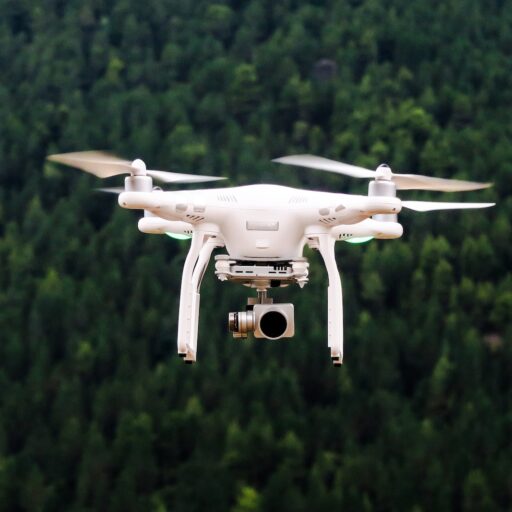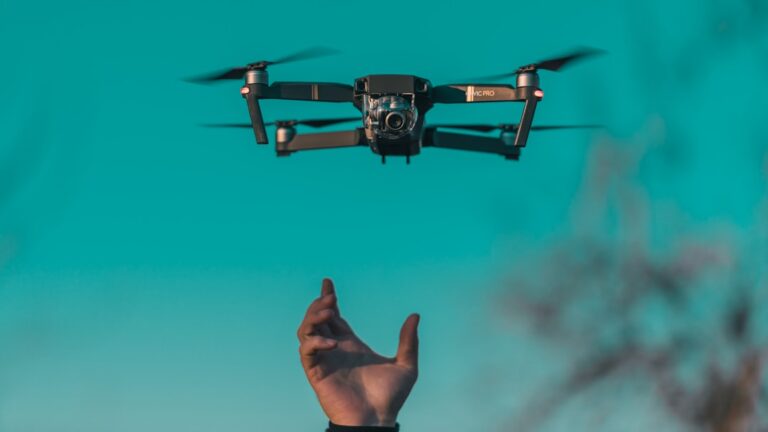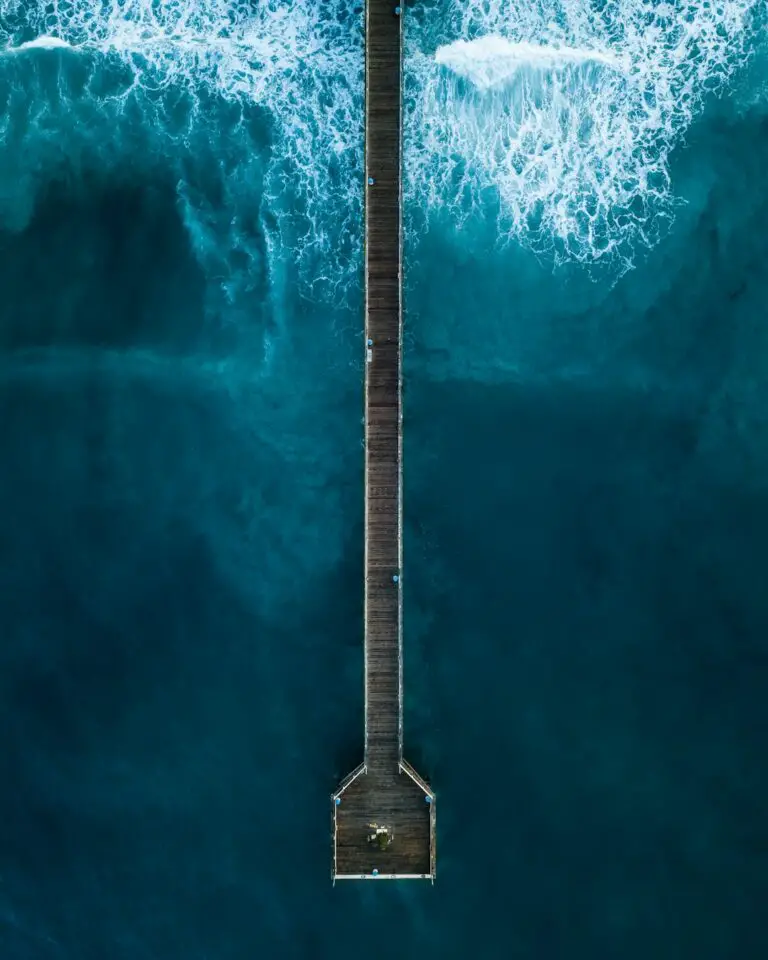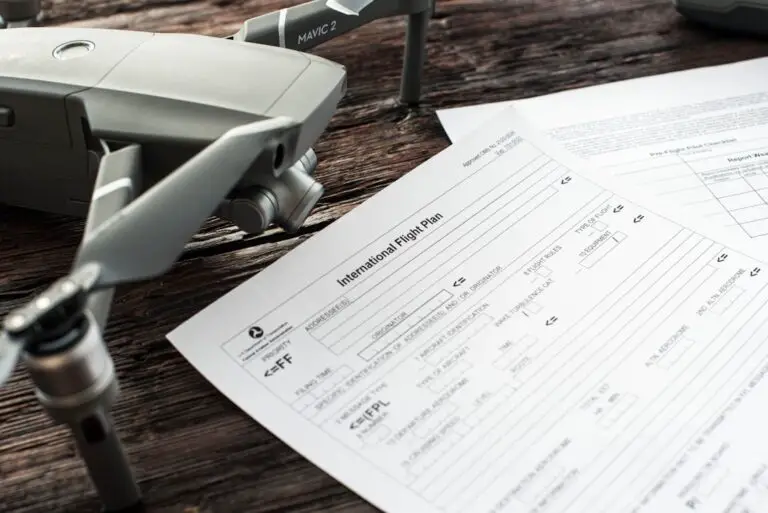Support our educational content for free when you purchase through links on our site. Learn more
Where Can I Fly My Drone in My Area? 15 Top Spots & Tips (2025) 🚁
Ever found yourself staring at your drone, itching to take off, but wondering, “Wait, where exactly can I fly this thing around here without breaking the rules?” You’re not alone! Navigating the maze of drone laws, no-fly zones, and perfect flying spots can feel like decoding a secret map. But don’t worry — we at Drone Brands™ have your back. In this guide, we’ll uncover 15 of the best local places to fly your drone safely and legally, reveal how to spot no-fly zones before you launch, and share insider tips to capture jaw-dropping footage in your own backyard.
Did you know that over 70% of drone pilots accidentally fly in restricted airspace at least once? 😱 That’s why understanding where you can and can’t fly is crucial — not just to avoid fines but to keep the skies safe for everyone. Ready to become a confident, rule-abiding drone pilot and unlock your area’s hidden aerial gems? Let’s dive in!
Key Takeaways
- Always check FAA and local regulations before flying to avoid restricted airspace and no-fly zones.
- Use trusted apps like Airmap and Kittyhawk to find legal flying spots and real-time airspace updates.
- Explore 15 top drone-friendly locations including parks, beaches, and reservoirs near urban and suburban areas.
- Understand the difference between recreational and commercial drone laws, especially in sensitive areas like Washington, D.C.
- Consider drone flight training and insurance to boost your skills and protect your investment.
Ready to gear up? Shop top-rated drones and accessories here:
Table of Contents
⚡️ Quick Tips and Facts
📜 Understanding Drone Flight Regulations and History
🗺️ How to Find Legal Drone Flying Zones in Your Area
1️⃣ Top 10 Best Places to Fly Your Drone Locally – Parks, Beaches, and Open Spaces
📍 Navigating Urban Drone Flight: Where You Can and Can’t Fly in Cities
🛑 Understanding No-Fly Zones: Airports, Military Bases, and Sensitive Areas
🌳 Flying Your Drone in Nature Reserves and Wildlife Areas: Rules and Best Practices
🛠️ Tools and Apps to Help You Locate Safe Drone Flying Spots
📚 Taking Drone Flight Training Classes Near You: Boost Your Skills and Confidence
🛡️ Drone Insurance and Liability: Protect Yourself While Flying
🌐 Community and Social Groups for Local Drone Pilots: Connect and Share
🛫 Washington, D.C. Drone Flight Laws: Recreational vs. Commercial Flying Explained
📍 Prime Drone Flying Spots Near Washington, D.C. – Parks and Scenic Locations
— Fountainhead Regional Park: A Drone Pilot’s Paradise?
— Sandy Point State Park: Coastal Flying Adventures
— Liberty Reservoir: Lakeside Drone Photography Hotspot
— Greenwell State Park: Forested Flight Zones and Tips
🛫 How to Get FAA Authorization for Drone Flights in Controlled Airspace
📜 Understanding Local and State Drone Laws: What You Need to Know
🎥 Capturing Epic Drone Footage: Tips for Flying in Your Area
🚁 Troubleshooting Common Drone Flight Issues in Your Neighborhood
🎯 Conclusion: Mastering the Art of Flying Your Drone Safely and Legally
🔗 Recommended Links for Drone Pilots
❓ Frequently Asked Questions About Flying Drones Locally
📚 Reference Links and Resources
Quick Tips and Facts
To find out where you can fly your drone, check out our comprehensive guide at https://www.dronebrands.org/where-can-i-fly-my-drone/. Here are some quick tips and facts to get you started:
- Always check the FAA’s UAS Facility Maps for airspace restrictions before flying your drone.
- Register your drone with the FAA if it weighs over 0.55 pounds.
- Keep your drone in sight at all times and avoid flying over people or crowds.
- Respect no-fly zones, such as airports, national parks, and sensitive areas.
- Follow local drone laws and regulations, which can be found on the Drone Laws and Regulations page.
Understanding Drone Regulations
Drone regulations vary by country and region. In the United States, the Federal Aviation Administration (FAA) is responsible for regulating drone use. For more information on drone laws and regulations, visit the FAA’s website.
Understanding Drone Flight Regulations and History
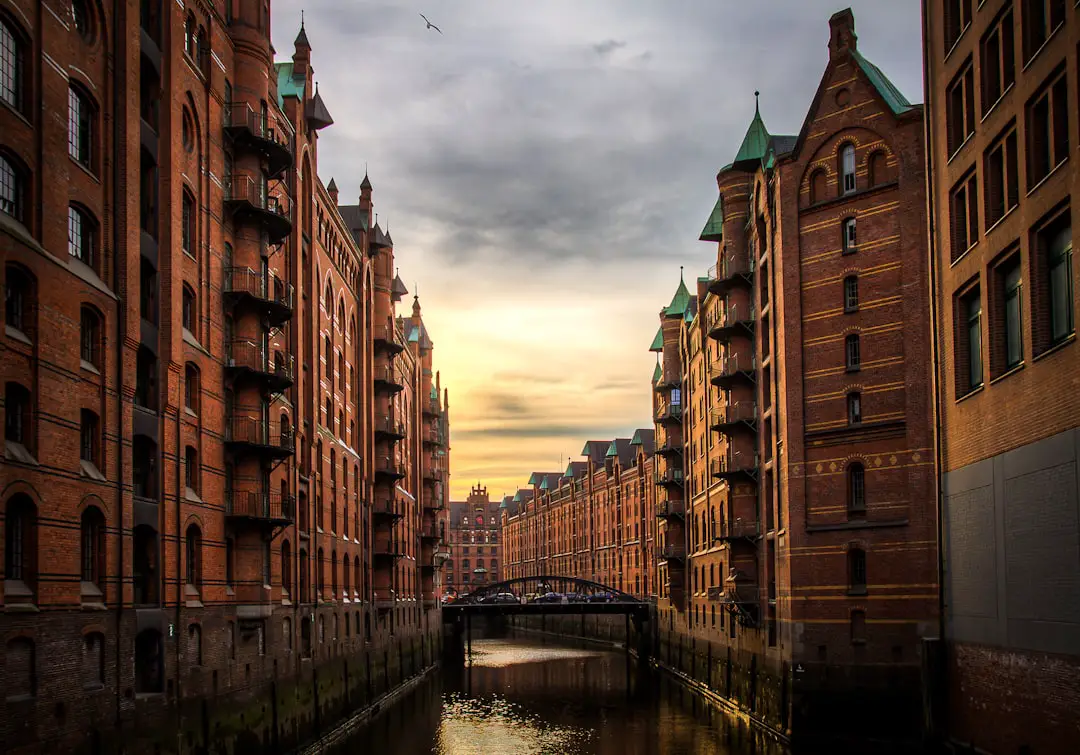
The history of drone flight regulations is complex and evolving. In the United States, the FAA has been working to develop and implement regulations for drone use since 2015. For more information on the history of drone regulations, check out our article on Drone Industry News.
Key Milestones in Drone Regulation
- 2015: The FAA releases its first set of rules for commercial drone use.
- 2016: The FAA releases its Part 107 rules, which govern commercial drone use.
- 2018: The FAA releases its Recreational UAS Safety Test (TRUST) for recreational drone pilots.
How to Find Legal Drone Flying Zones in Your Area
To find legal drone flying zones in your area, follow these steps:
- Check the FAA’s UAS Facility Maps for airspace restrictions.
- Use a drone app, such as Airmap or Kittyhawk, to find nearby flying zones.
- Contact your local FAA office for information on drone flying zones in your area.
- Check with local authorities, such as parks and recreation departments, for information on drone flying zones.
Using Drone Apps to Find Flying Zones
Drone apps, such as Airmap and Kittyhawk, can help you find legal drone flying zones in your area. These apps provide information on airspace restrictions, weather conditions, and other factors that may affect your flight.
1️⃣ Top 10 Best Places to Fly Your Drone Locally – Parks, Beaches, and Open Spaces
Here are the top 10 best places to fly your drone locally:
- Fountainhead Regional Park: A 2,000-acre park with rolling hills, forests, and a reservoir.
- Sandy Point State Park: A 786-acre park with a beach, trails, and a lighthouse.
- Liberty Reservoir: A 3,100-acre reservoir with a park and trails.
- Greenwell State Park: A 596-acre park with a beach, trails, and a forest.
- Other local parks and open spaces: Check with your local parks and recreation department for information on drone flying zones.
Tips for Flying in Local Parks
- Always follow local drone regulations and rules.
- Be respectful of other park users, such as hikers and picnickers.
- Keep your drone in sight at all times and avoid flying over people or crowds.
Navigating Urban Drone Flight: Where You Can and Can’t Fly in Cities
Urban drone flight can be challenging due to airspace restrictions and other factors. Here are some tips for navigating urban drone flight:
- Check the FAA’s UAS Facility Maps for airspace restrictions.
- Use a drone app, such as Airmap or Kittyhawk, to find nearby flying zones.
- Contact your local FAA office for information on drone flying zones in your area.
Understanding Airspace Restrictions
Airspace restrictions, such as no-fly zones, can be found on the FAA’s UAS Facility Maps. These restrictions are in place to ensure safe and responsible drone use.
Understanding No-Fly Zones: Airports, Military Bases, and Sensitive Areas
No-fly zones, such as airports, military bases, and sensitive areas, are restricted for drone flight. Here are some tips for understanding no-fly zones:
- Check the FAA’s UAS Facility Maps for no-fly zones.
- Use a drone app, such as Airmap or Kittyhawk, to find nearby no-fly zones.
- Contact your local FAA office for information on no-fly zones in your area.
Types of No-Fly Zones
- Airports: Airports are restricted for drone flight due to safety concerns.
- Military Bases: Military bases are restricted for drone flight due to security concerns.
- Sensitive Areas: Sensitive areas, such as national parks and wildlife refuges, are restricted for drone flight due to environmental concerns.
Flying Your Drone in Nature Reserves and Wildlife Areas: Rules and Best Practices
Flying your drone in nature reserves and wildlife areas requires special care and attention. Here are some rules and best practices to follow:
- Check with local authorities, such as park rangers, for information on drone flying zones.
- Keep your drone in sight at all times and avoid flying over people or crowds.
- Be respectful of wildlife and avoid disturbing or endangering animals.
Tips for Flying in Nature Reserves
- Always follow local drone regulations and rules.
- Be aware of your surroundings and avoid flying over sensitive areas.
- Keep your drone quiet and avoid disturbing wildlife.
Tools and Apps to Help You Locate Safe Drone Flying Spots
There are several tools and apps available to help you locate safe drone flying spots. Here are a few options:
- Airmap: A drone app that provides information on airspace restrictions, weather conditions, and other factors that may affect your flight.
- Kittyhawk: A drone app that provides information on airspace restrictions, weather conditions, and other factors that may affect your flight.
- FAA’s UAS Facility Maps: A website that provides information on airspace restrictions and other factors that may affect your flight.
Using Drone Apps to Find Safe Flying Spots
Drone apps, such as Airmap and Kittyhawk, can help you find safe drone flying spots by providing information on airspace restrictions, weather conditions, and other factors that may affect your flight.
Taking Drone Flight Training Classes Near You: Boost Your Skills and Confidence
Taking drone flight training classes can help you boost your skills and confidence as a drone pilot. Here are a few options to consider:
- FAA-certified drone pilot training: A training program that teaches you the skills and knowledge you need to become a certified drone pilot.
- Local drone flight schools: A training program that teaches you the skills and knowledge you need to fly a drone safely and responsibly.
- Online drone training courses: A training program that teaches you the skills and knowledge you need to fly a drone safely and responsibly.
Benefits of Drone Flight Training
- Improved safety: Drone flight training can help you learn how to fly a drone safely and avoid accidents.
- Increased confidence: Drone flight training can help you build your confidence as a drone pilot and improve your flying skills.
- Better understanding of regulations: Drone flight training can help you understand the regulations and rules that govern drone use.
Drone Insurance and Liability: Protect Yourself While Flying
Drone insurance and liability are important considerations for drone pilots. Here are a few options to consider:
- Drone insurance: A type of insurance that covers you in case of an accident or damage to your drone.
- Liability insurance: A type of insurance that covers you in case you cause damage or injury to someone else while flying your drone.
Types of Drone Insurance
- Hull insurance: A type of insurance that covers the physical damage to your drone.
- Liability insurance: A type of insurance that covers you in case you cause damage or injury to someone else while flying your drone.
- Accident insurance: A type of insurance that covers you in case of an accident or damage to your drone.
Community and Social Groups for Local Drone Pilots: Connect and Share
Connecting with other drone pilots can be a great way to learn new skills, share knowledge, and stay up-to-date on the latest developments in the drone industry. Here are a few options to consider:
- Local drone clubs: A group of drone pilots who meet regularly to fly, share knowledge, and socialize.
- Online drone forums: A online community of drone pilots who share knowledge, ask questions, and provide feedback.
- Social media groups: A group of drone pilots who connect and share on social media platforms.
Benefits of Joining a Drone Community
- Networking opportunities: Joining a drone community can help you connect with other drone pilots and learn from their experiences.
- Knowledge sharing: Joining a drone community can help you share your knowledge and learn from others.
- Staying up-to-date: Joining a drone community can help you stay up-to-date on the latest developments in the drone industry.
Washington, D.C. Drone Flight Laws: Recreational vs. Commercial Flying Explained
Washington, D.C. has specific laws and regulations governing drone flight. Here are some key things to know:
- Recreational flying: Recreational drone flying is allowed in certain areas, but there are restrictions and regulations to follow.
- Commercial flying: Commercial drone flying is allowed in certain areas, but there are restrictions and regulations to follow.
Understanding Washington, D.C. Drone Laws
- FAA regulations: The FAA has specific regulations governing drone flight in Washington, D.C.
- Local regulations: Washington, D.C. has its own regulations governing drone flight, which may be more restrictive than FAA regulations.
Prime Drone Flying Spots Near Washington, D.C. – Parks and Scenic Locations
Here are some prime drone flying spots near Washington, D.C.:
- Fountainhead Regional Park: A 2,000-acre park with rolling hills, forests, and a reservoir.
- Sandy Point State Park: A 786-acre park with a beach, trails, and a lighthouse.
- Liberty Reservoir: A 3,100-acre reservoir with a park and trails.
Tips for Flying Near Washington, D.C.
- Check regulations: Always check regulations before flying your drone near Washington, D.C.
- Be respectful: Be respectful of other park users and follow all rules and regulations.
- Keep your drone in sight: Always keep your drone in sight and avoid flying over people or crowds.
— Fountainhead Regional Park: A Drone Pilot’s Paradise?
Fountainhead Regional Park is a 2,000-acre park with rolling hills, forests, and a reservoir. Here are some tips for flying your drone at Fountainhead Regional Park:
- Check regulations: Always check regulations before flying your drone at Fountainhead Regional Park.
- Be respectful: Be respectful of other park users and follow all rules and regulations.
- Keep your drone in sight: Always keep your drone in sight and avoid flying over people or crowds.
Benefits of Flying at Fountainhead Regional Park
- Scenic views: Fountainhead Regional Park offers scenic views of the surrounding countryside.
- Variety of landscapes: The park has a variety of landscapes, including rolling hills, forests, and a reservoir.
- Plenty of space: The park has plenty of space to fly your drone and practice your skills.
— Sandy Point State Park: Coastal Flying Adventures
Sandy Point State Park is a 786-acre park with a beach, trails, and a lighthouse. Here are some tips for flying your drone at Sandy Point State Park:
- Check regulations: Always check regulations before flying your drone at Sandy Point State Park.
- Be respectful: Be respectful of other park users and follow all rules and regulations.
- Keep your drone in sight: Always keep your drone in sight and avoid flying over people or crowds.
Benefits of Flying at Sandy Point State Park
- Coastal views: Sandy Point State Park offers stunning coastal views and a chance to fly over the water.
- Variety of landscapes: The park has a variety of landscapes, including beaches, trails, and a lighthouse.
- Plenty of space: The park has plenty of space to fly your drone and practice your skills.
— Liberty Reservoir: Lakeside Drone Photography Hotspot
Liberty Reservoir is a 3,100-acre reservoir with a park and trails. Here are some tips for flying your drone at Liberty Reservoir:
- Check regulations: Always check regulations before flying your drone at Liberty Reservoir.
- Be respectful: Be respectful of other park users and follow all rules and regulations.
- Keep your drone in sight: Always keep your drone in sight and avoid flying over people or crowds.
Benefits of Flying at Liberty Reservoir
- Lakeside views: Liberty Reservoir offers stunning lakeside views and a chance to fly over the water.
- Variety of landscapes: The park has a variety of landscapes, including trails and a reservoir.
- Plenty of space: The park has plenty of space to fly your drone and practice your skills.
— Greenwell State Park: Forested Flight Zones and Tips
Greenwell State Park is a 596-acre park with a beach, trails, and a forest. Here are some tips for flying your drone at Greenwell State Park:
- Check regulations: Always check regulations before flying your drone at Greenwell State Park.
- Be respectful: Be respectful of other park users and follow all rules and regulations.
- Keep your drone in sight: Always keep your drone in sight and avoid flying over people or crowds.
Benefits of Flying at Greenwell State Park
- Forested views: Greenwell State Park offers stunning forested views and a chance to fly over the trees.
- Variety of landscapes: The park has a variety of landscapes, including beaches, trails, and a forest.
- Plenty of space: The park has plenty of space to fly your drone and practice your skills.
How to Get FAA Authorization for Drone Flights in Controlled Airspace
To get FAA authorization for drone flights in controlled airspace, follow these steps:
- Check the FAA’s UAS Facility Maps: Check the FAA’s UAS Facility Maps to see if the area you want to fly in is controlled airspace.
- Use LAANC or FAADroneZone: Use LAANC or FAADroneZone to request airspace authorization.
- Follow the instructions: Follow the instructions provided by LAANC or FAADroneZone to complete the authorization process.
Benefits of Getting FAA Authorization
- Safe and responsible flying: Getting FAA authorization ensures that you are flying safely and responsibly.
- Compliance with regulations: Getting FAA authorization ensures that you are complying with all relevant regulations.
- Access to controlled airspace: Getting FAA authorization gives you access to controlled airspace, which may be restricted to unauthorized drones.
Understanding Local and State Drone Laws: What You Need to Know
Local and state drone laws can be complex and varied. Here are some key things to know:
- Check local regulations: Always check local regulations before flying your drone.
- Understand state laws: Understand the state laws that govern drone use in your area.
- Follow federal regulations: Always follow federal regulations, such as those set by the FAA.
Benefits of Understanding Local and State Drone Laws
- Safe and responsible flying: Understanding local and state drone laws ensures that you are flying safely and responsibly.
- Compliance with regulations: Understanding local and state drone laws ensures that you are complying with all relevant regulations.
- Avoiding fines and penalties: Understanding local and state drone laws can help you avoid fines and penalties for non-compliance.
Capturing Epic Drone Footage: Tips for Flying in Your Area
Capturing epic drone footage requires a combination of skill, practice, and knowledge of your area. Here are some tips for capturing epic drone footage:
- Know your area: Familiarize yourself with your area and the best spots to capture epic footage.
- Practice your skills: Practice your flying skills and learn how to capture smooth and stable footage.
- Use the right equipment: Use the right equipment, such as a high-quality camera and gimbal, to capture epic footage.
Benefits of Capturing Epic Drone Footage
- Stunning visuals: Capturing epic drone footage can provide stunning visuals and a unique perspective on your area.
- Creative expression: Capturing epic drone footage can be a form of creative expression and a way to showcase your skills.
- Professional opportunities: Capturing epic drone footage can lead to professional opportunities, such as working with film and photography clients.
Troubleshooting Common Drone Flight Issues in Your Neighborhood
Troubleshooting common drone flight issues in your neighborhood requires a combination of knowledge, skill, and practice. Here are some common issues and how to troubleshoot them:
- Interference: Interference from other devices can cause issues with your drone’s signal and navigation.
- Weather conditions: Weather conditions, such as wind and rain, can affect your drone’s performance and stability.
- Battery life: Battery life can be a issue, especially if you are flying in areas with high interference or weather conditions.
Benefits of Troubleshooting Common Drone Flight Issues
- Safe and responsible flying: Troubleshooting common drone flight issues ensures that you are flying safely and responsibly.
- Improved performance: Troubleshooting common drone flight issues can improve your drone’s performance and stability.
- Extended battery life: Troubleshooting common drone flight issues can help extend your drone’s battery life and reduce the need for frequent recharging.
Conclusion: Mastering Safe and Legal Drone Flying in Your Area 🚀

Well, fellow drone adventurers, we’ve soared through the skies of knowledge on where you can fly your drone safely and legally. From understanding the FAA’s airspace maps to discovering the best local parks like Fountainhead Regional Park and Sandy Point State Park, you now have the tools to plan your next epic flight with confidence.
Remember, checking local and federal regulations before every flight is non-negotiable — it keeps you out of trouble and ensures the skies stay safe for everyone. Whether you’re a recreational flyer or a commercial pilot, knowing the difference in rules and securing FAA authorization when needed will keep your drone adventures smooth.
If you’re near Washington, D.C., those scenic spots we covered are absolute gems — just be mindful of the strict airspace restrictions around the capital. And don’t forget, apps like Airmap and Kittyhawk are your best friends for real-time airspace updates.
By following these guidelines and tapping into local drone communities, you’ll not only fly smarter but also join a vibrant network of aerial explorers. So, gear up, fly safe, and capture those breathtaking shots that only a drone can deliver! 🌟
Recommended Links for Drone Pilots 🎯
Ready to upgrade your drone game? Check out these top picks and resources:
- DJI Mavic Air 2: Amazon | DJI Official Website
- DJI Mini 3 Pro: Amazon | DJI Official Website
- Airmap App: Airmap Official
- Kittyhawk App: Kittyhawk Official
- FAA UAS Facility Maps: FAA Drone Zone
- Drone Flight Training Courses: Drone Pilot Ground School
Books for Aspiring Drone Pilots:
- The Drone Pilot’s Handbook by Adam Juniper: Amazon
- Make: Drones: Teach an Arduino to Fly by David McGriffy: Amazon
Frequently Asked Questions About Flying Drones Locally ❓
What are the local regulations for flying drones in my area?
Local regulations vary widely depending on your city, state, or country. In the U.S., the FAA governs drone flight, but many municipalities have their own rules regarding drone use in parks, public spaces, and near private property. Always check your local government or parks department websites for specific rules. For example, Washington, D.C. is a designated No Drone Zone due to security concerns. Use resources like Drone Laws and Regulations to stay informed.
How can I find no-fly zones for drones near me?
No-fly zones are typically around airports, military bases, national parks, and sensitive government facilities. The FAA’s UAS Facility Maps and apps like Airmap and Kittyhawk provide real-time data on restricted airspace. Additionally, DJI drones have built-in geofencing that alerts you or restricts flight in no-fly zones, but always verify with official sources before flying.
Are there any national parks or public spaces where I can fly my drone?
Most U.S. national parks prohibit drone flights to protect wildlife and visitor experience. However, many state parks and local open spaces allow drone flying, often with restrictions. For example, Fountainhead Regional Park and Sandy Point State Park near Washington, D.C., are drone-friendly areas. Always check park-specific rules and obtain any necessary permits.
What are the best apps for finding drone-friendly locations?
Top apps include:
- Airmap: Offers airspace info, flight planning, and LAANC authorization.
- Kittyhawk: Provides real-time airspace alerts and flight logging.
- B4UFLY: FAA’s official app for airspace status.
- DJI Fly: For DJI drone users, integrates geofencing and flight data.
These apps help you avoid restricted zones and plan safe flights.
Can I fly my drone in urban areas or is it restricted?
Urban drone flights are often heavily restricted due to dense populations, tall buildings, and controlled airspace. Flying near airports or heliports is usually prohibited without FAA authorization. Always check local laws and use apps to verify airspace status. If you plan to fly commercially in urban areas, obtaining a Part 107 certification and necessary waivers is essential.
How do I get permission to fly my drone in restricted areas?
For controlled airspace (Class B, C, D, or E), you can request authorization through the Low Altitude Authorization and Notification Capability (LAANC) system or the FAA Drone Zone website. Commercial pilots may also apply for waivers for specific operations. For private properties or parks, contact the property owner or park management for permission.
What are the consequences of flying my drone in a no-fly zone?
Flying in no-fly zones can lead to serious consequences, including fines, confiscation of your drone, and even criminal charges. The FAA can impose penalties up to $27,500 for unauthorized flights, and in extreme cases, jail time. Additionally, flying near airports or sensitive areas risks public safety and can cause accidents. Always fly responsibly and legally.
Reference Links and Resources 📚
- FAA UAS Facility Maps: https://www.faa.gov/uas/commercial_operators/uas_facility_maps
- FAA Drone Zone (for registration and authorizations): https://faadronezone.faa.gov/
- Airmap Official Website: https://uavcoach.com/airmap-closes-app/
- Kittyhawk Official Website: https://kittyhawk.io/help-category/flightdeck/
- DJI FlySafe Portal (Unlock No-Fly Zones): https://fly-safe.dji.com/unlock
- UK Civil Aviation Authority – Where You Can Fly Drones: https://register-drones.caa.co.uk/drone-code/where-you-can-fly
- National Park Service Drone Policy: https://www.nps.gov/subjects/sound/uas.htm
- FAA Recreational UAS Safety Test (TRUST): https://www.faa.gov/uas/recreational_flyers/knowledge_test_updates
Fly smart, fly safe, and keep those propellers spinning! 🛸
